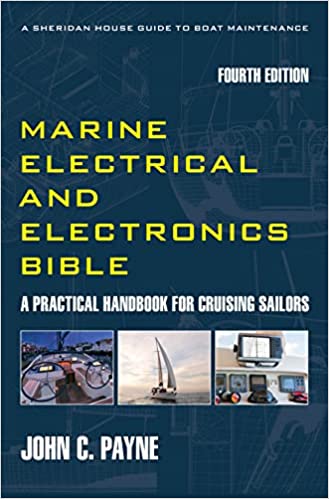Boat Starter Motor
A marine diesel engine boat starter motor and starting system must be viewed as not simply a collection of series connected components, but as a total system. The typical starting marine diesel starting system comprises the following elements. All are required to operate correctly for your marine diesel engine to turn over and start.
a. DC positive circuit. This includes connections at the battery, the battery isolator or changeover switch; the starting solenoid electrical connections; the solenoid contacts; the actual boat starter motor, which includes several internal components such as the carbon brushes, the brush gear, commutator, bearings and the windings.
b. DC Negative circuit. Which includes the negative connections at the battery including the battery terminals; the diesel engine block, the cable that runs back to the starting battery, and the ammeter shunt if a meter is fitted.
c. The engine control system. This goes from the engine control panel in the cockpit and includes the ignition key switch; the engine stop and start buttons; the control wiring harness or loom; the wiring loom plugs and connectors; the control circuit fuses if fitted and so on.
d. The preheating system. This includes the heating elements or glow plugs installed on the engine; the at the plugs and the control relays, the relays and all the terminations and connectors.
e. The engine starting battery. Finally, we have the actual starting battery, which is subject to factors such as state of charge, condition and actual capacity and in some cases the charging source, which is invariably the engine mounted alternator which is dependent on a rubber drive belt providing rotational power from the engine.
Marine Diesel Engine Starting System
The math of this analysis is that there are also a total of 14 connection points plus the solenoid coil, the starter motor, the engine starting battery, the key switch that can directly impact on the starting system and prevent the system functioning. Each point represents a single point failure with subsequent total system failure, with no apparent redundancy. If a person persists with turning over an engine that will not start they may also burn the starter motor out. There are other less common scenarios. How much exposure does your system have for failure?
Marine Diesel Engine Starting System
Starting Circuit. Relocate and connect the main negative cable as close as possible to the starter motor. This maintains the two connections but takes the engine block out of the circuit, and generally reduces voltage drop in the circuit. The engine block is circuit resistance. These connections commonly vibrate loose and are rarely checked and tightened until it is too late and the alternator fails. In most cases a new negative cable will be required.
Marine Diesel Engine Starting System
Separation of the engine starting and charging systems eliminates the many problems of voltage surges and transients. Every time you start a boat diesel engine a current droop is imposed on anything else connected to the same battery. When separated there are now two redundant power systems, each one being capable of powering the vessel, and any single failure of one system will not affect the other. The alternator negatives provide some redundancy to the main boat starter motor negative. As critical equipment has been evaluated and appropriate maintenance strategies implemented, the average time between failures is also extended.
Boat Starter Motor System
Boat Starter Motor Spares. It is relatively uncommon to find a boat with a spare boat starter motor, or a spare charging alternator and these should be a prerequisite on an extended ocean or offshore voyage. Whilst relatively uncommon, some boats may carry spare bearings, diode plates and brush-gear. However, the repair task does require very good skills and tools and it is much quicker to change out the entire alternator. As is usual in boating failures will always occur at the worst possible time and under the worst possible conditions. I should add that many do not even carry a spare rubber drive belt for an alternator, and when the belt fails the seawater pump also goes. Invest in a spare starter motor and a spare alternator, it is a very small price to pay in the overall scheme of things.
After we have implemented some of the circuit separation measures, the engine starting system is more efficient with the negative connection at the starter reducing voltage drops. This reduces the starting current required by the boat starter motor as less resistance is in the circuit. This in turn reduces the engine run time as there is less current to replace. Improved voltage and current at the boat starter motor also improves the engine starting times, meaning it turns over faster and for less time, which also reduces the actual stress on the starting motor. When you combine this with carrying a spare boat starter motor and a solenoid, there is a reasonable chance of being operational within an hour. Look after your marine diesel engine boat starter motor system, and also your boat charging system.
